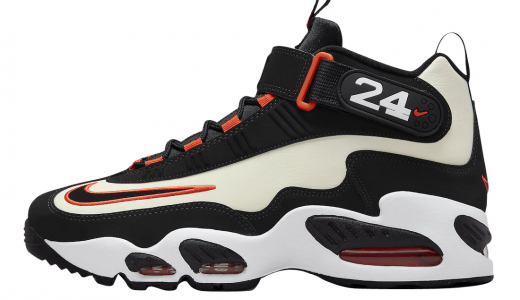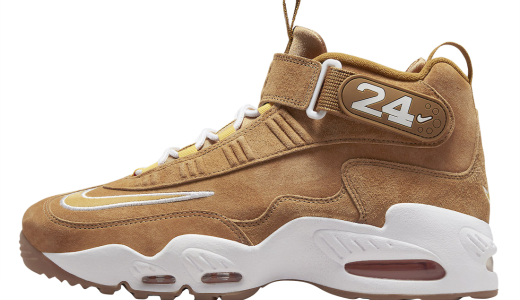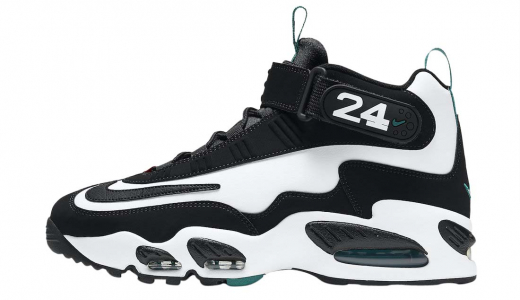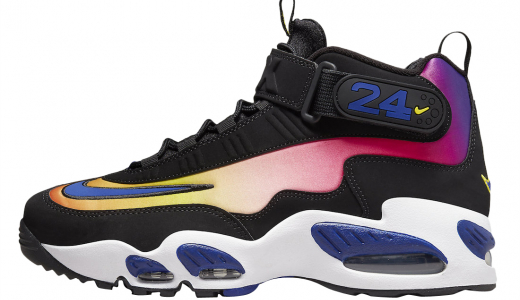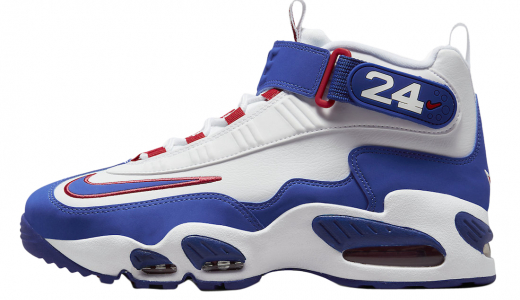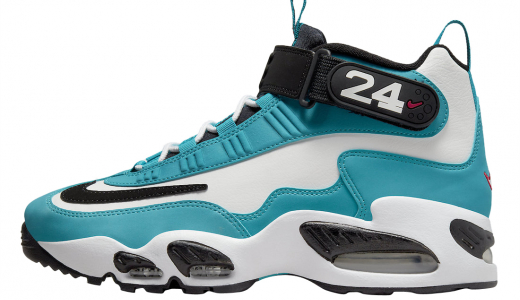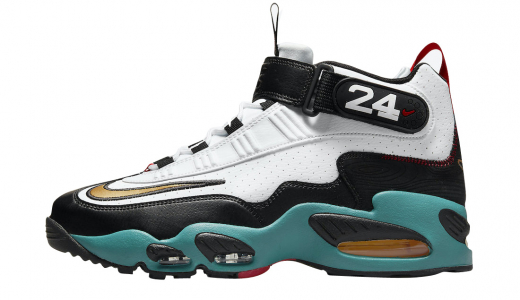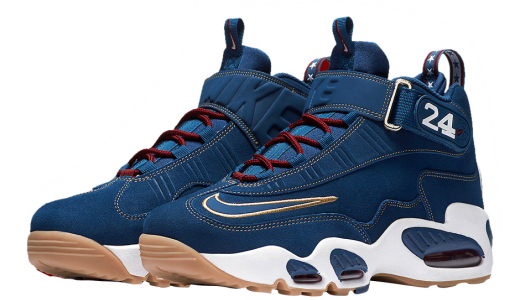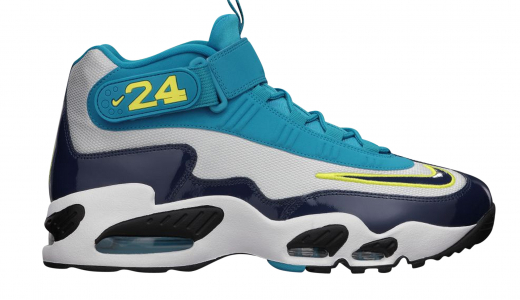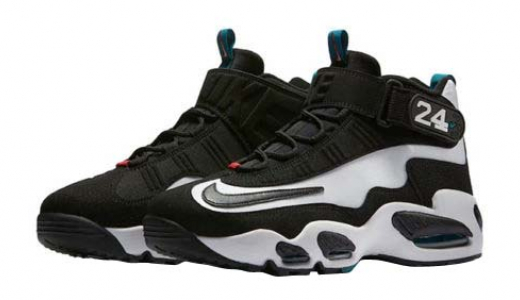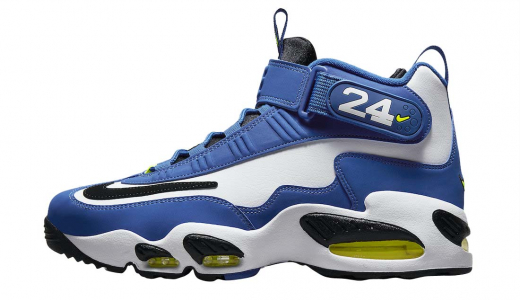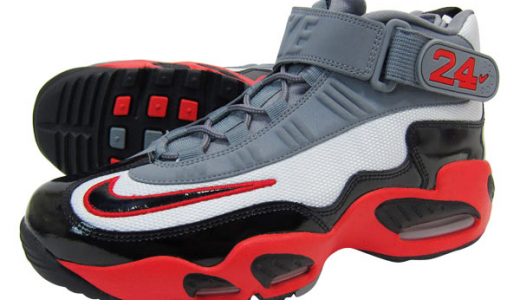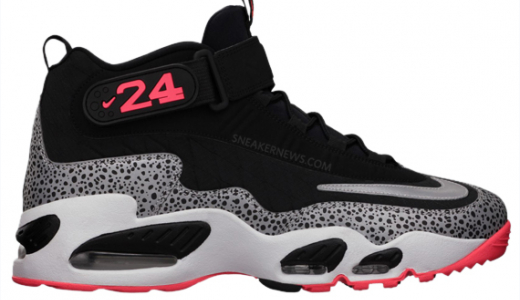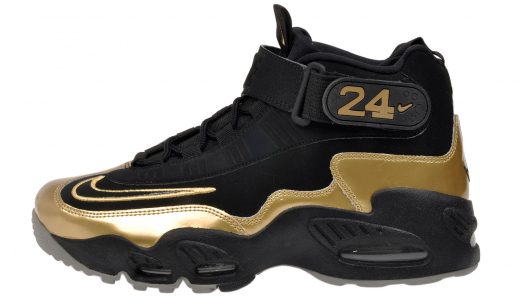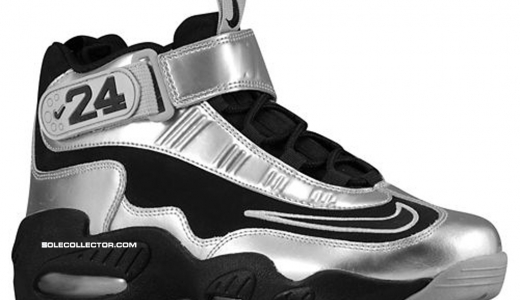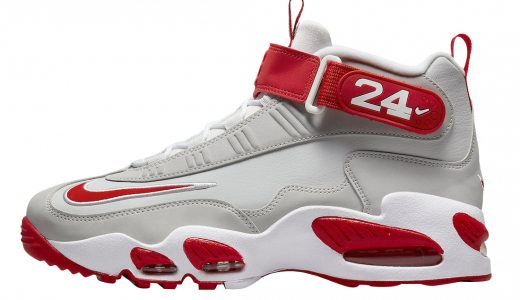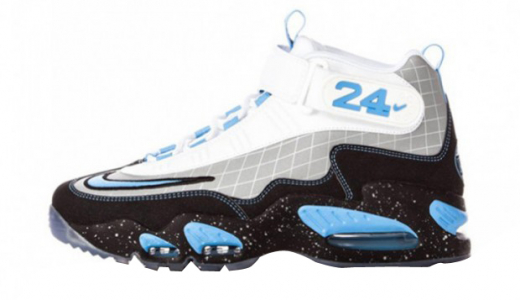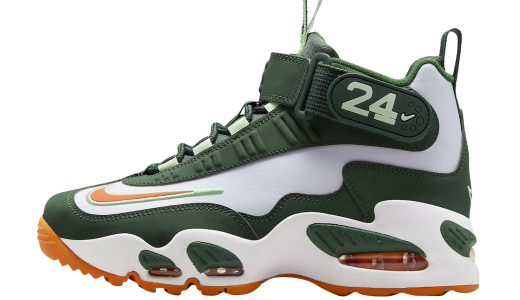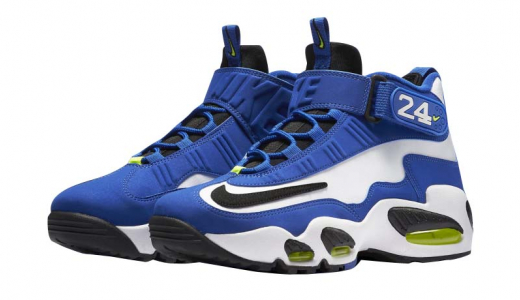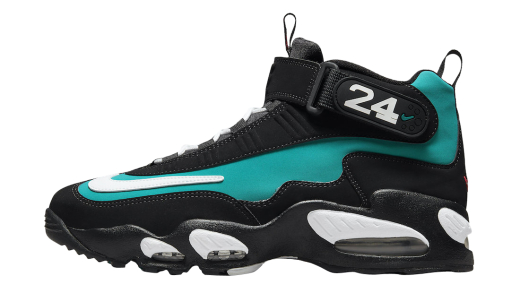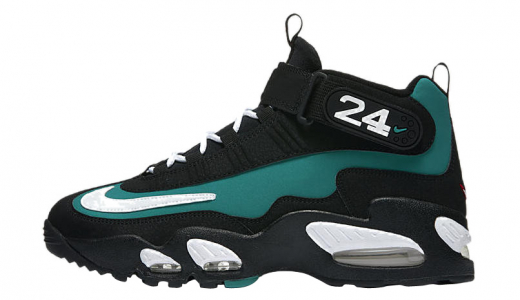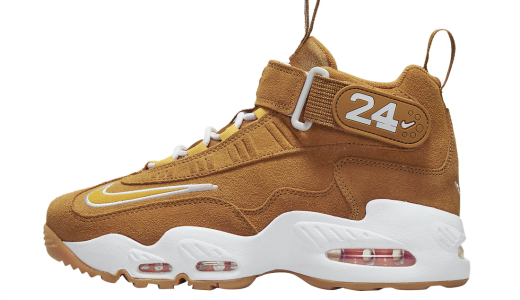Nike Air Griffey Max 1
The Nike Air Griffey Max 1 is a classic sneaker that stands as a tribute to one of baseball's most iconic players, Ken Griffey Jr. First released in 1996, this model was designed to match Griffey's dynamic playing style and charismatic persona on and off the field. The shoe features a high-top silhouette for added ankle support, strategic Max Air cushioning for enhanced comfort, and a distinctive Velcro strap with Griffey's famous number "24." Its blend of performance technology and retro style has made it an enduring favorite among sneaker enthusiasts and athletes alike.
Over the years, the Nike Air Griffey Max 1 has seen numerous re-releases, collaborations, and colorways, maintaining its relevance in a constantly evolving sneaker landscape. Each iteration continues to capture the spirit of Ken Griffey Jr.'s legacy while appealing to new generations of fans. The sneaker's design seamlessly blends elements of athletic functionality with streetwear aesthetics, making it versatile for both sports and casual wear. Whether worn as a nostalgic nod to Griffey's career or as a fashion statement, the Air Griffey Max 1 remains a testament to Nike's innovation and enduring appeal in athletic footwear.
History of Nike Air Griffey Max 1
The Nike Air Griffey Max 1 is not just a sneaker; it’s a cultural icon that embodies the vibrant intersection of sports and lifestyle that defined the mid-1990s. Its origins trace back to one of baseball’s most charismatic figures, Ken Griffey Jr., who was at the peak of his career and influence when the sneaker was first released. To understand the Air Griffey Max 1, it’s essential to delve into the story of both the athlete it was designed for and the burgeoning sneaker culture it helped shape.
The Birth of a Baseball Icon
Ken Griffey Jr., known affectionately as "The Kid," burst onto the Major League Baseball scene as a prodigious talent with the Seattle Mariners in 1989. His athletic prowess, infectious smile, and on-field charisma quickly garnered a massive fanbase and made him one of the most marketable athletes of his generation. Griffey’s influence extended beyond just his on-field exploits; he became a crossover star whose appeal transcended baseball, influencing music, television, and, notably, fashion.
Inspiration and Design
In the mid-1990s, Nike sought to capitalize on Griffey’s popularity by designing a signature shoe that would reflect his personality and playing style. Thus, the Nike Air Griffey Max 1 was born. Released in 1996, this shoe was designed by Nike’s veteran designer Tracy Teague. The design incorporated bold colors and innovative technology, notably the Max Air cushioning unit, which provided unparalleled comfort and performance.
The Air Griffey Max 1 was notable for its striking aesthetics. Its high-top design, combined with an eye-catching ankle strap and the unconventional Swoosh placement adjacent to the strap, made it unlike any other athletic shoe of its time. The black, white, and teal colorway reflected both the Seattle Mariners' palette and the fashion sensibilities of the era.
Technological Innovations
At the heart of the Nike Air Griffey Max 1 was an emphasis on technology. The shoe featured a full-length Max Air cushioning unit, designed to offer superior shock absorption—critical for the wear and tear faced by professional athletes. Additionally, the sneaker employed a synthetic leather upper paired with nubuck, contributing to its durability and aesthetic appeal. The design also included a looped back pull tab and a dynamic lacing system, ensuring a secure fit for athletes and casual wearers alike.
Cultural Impact
As much as the Air Griffey Max 1 was a technological marvel, its cultural impact was even more pronounced. When it debuted, the sneaker transcended its initial purpose as athletic footwear and found a place in the burgeoning streetwear scene. The '90s were a period of vibrant youth culture, and sneakers became a canvas for self-expression, influencing music, fashion, and art. The Air Griffey Max 1 fit perfectly into this cultural milieu, helping to popularize the notion of sneakers as a lifestyle choice.
Ken Griffey Jr. himself played a significant role in the marketing and popularization of the sneaker. His appearances in commercials, the ubiquity of his image in media, and his status as a young, cool athlete helped legitimize the shoe as both a sportswear essential and a fashion statement. Indeed, Griffey’s influence was such that even casual fans who might not follow baseball closely were drawn to the sneaker.
Resurgence and Reissues
The sneaker world operates in cycles, with certain models enjoying periodic revivals. The Nike Air Griffey Max 1 is no exception. Over the years, it has been re-released numerous times, finding new audiences with each iteration. The reissues often feature original colorways, but Nike has also experimented with new designs, tapping into nostalgia while keeping the sneaker relevant for modern consumers.
Throughout the 2000s and 2010s, the Air Griffey Max 1 saw several re-releases. Each resurgence was met with enthusiasm from both collectors and those who coveted a piece of '90s nostalgia. For many, purchasing a pair of Air Griffey Max 1s was a way to reconnect with their youth or celebrate an era when sports and sneaker culture were indelibly linked.
Legacy
The legacy of the Nike Air Griffey Max 1 is multi-faceted. As one of the most successful cross-sport signature shoes, it set a precedent for collaborations between athletes from non-basketball sports and major sportswear brands. Its success paved the way for other MLB players, and athletes from diverse fields, to earn signature shoe deals, though few have matched the cultural footprint left by the Griffey line.
Furthermore, the Air Griffey Max 1 remains a touchstone for sneaker enthusiasts, historians, and collectors. Its influence can be seen in various modern sneaker designs that harken back to the bold, unapologetic styles of the '90s. The shoe’s continued popularity in reissues showcases its timeless appeal, blending functionality with bold design—a testament to thoughtful innovation and marketing.
Conclusion
In the pantheon of iconic sneakers, the Nike Air Griffey Max 1 holds a special place, not just for its association with one of baseball’s greatest figures, but for its role in popularizing sneakers as cultural artifacts. Its revolutionary design, combined with the magnetic appeal of Ken Griffey Jr., made it a defining piece of '90s culture. As sneaker enthusiasts and cultural historians look back, the Air Griffey Max 1 remains a symbol of a time when sports, music, and fashion were in a dynamic conversation, forging new paths in the world of style and performance.
With every re-release, the Nike Air Griffey Max 1 renews its lease on cultural relevance, proving once again that great design and star power can indeed create timeless icons.
